Filter results by
Application
FrenchCreek Fall Safety provides a diverse selection of horizontal lifeline systems tailored to various needs, including steel I-beam, concrete, permanent, and temporary configurations. Horizontal lifeline systems, often referred to as HLL systems, serve as essential fall protection solutions in work environments lacking overhead anchorage points for personal tie-off. These systems offer a dependable and secure means to safeguard workers while they operate at elevated heights.
-
-
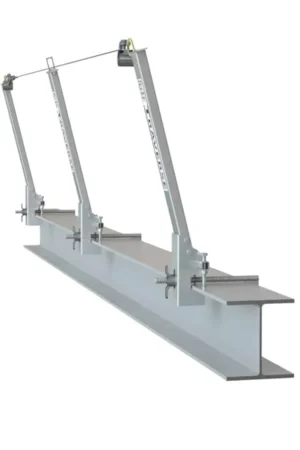
TRV120S12 Traverse Horizontal Lifeline System
120 Ft Traverse horizontal lifeline system, steel I-beam …
-
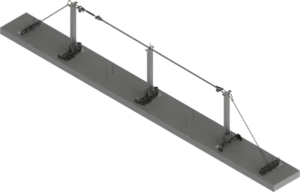
TRV120C Traverse Horizontal Lifeline System
120 Ft Traverse horizontal lifeline system, concrete base
-
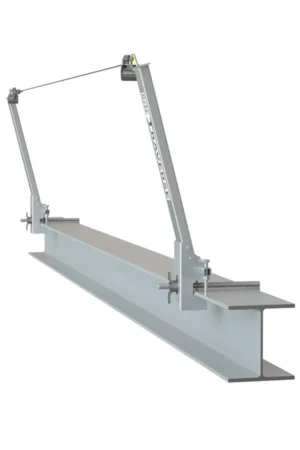
TRV30S12 Traverse Horizontal Lifeline System
30 Ft Traverse horizontal lifeline system, steel I-beam …
-
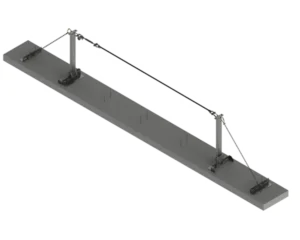
TRV60C Traverse Horizontal Lifeline System
60 Ft Traverse horizontal lifeline system, concrete base
-

TRV60S12 Traverse Horizontal Lifeline System
60 Ft Traverse horizontal lifeline system, steel I-beam …
-

TRV30C Traverse Horizontal Lifeline System
30 Ft Traverse horizontal lifeline system, concrete base
-
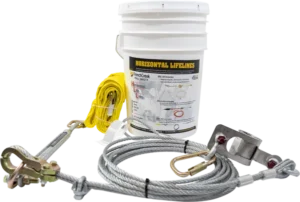
CHL-30 Wire Rope Horizontal Lifeline System
Wire rope horizontal lifeline system
-

CHL-60 Wire Rope Horizontal Lifeline System
Wire rope horizontal lifeline system
-
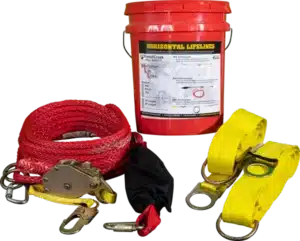
RHLD-30 Synthetic Rope Horizontal Lifeline System
Synthetic rope horizontal lifeline system
-
Horizontal Systems FAQs & Information
What is a Horizontal System?
Horizontal systems and cable fall protection systems are safety solutions designed to protect workers operating at heights along a horizontal path. These systems provide continuous fall protection by allowing the worker to move horizontally while remaining securely attached to a cable or track.
Types of Horizontal Fall Protection Systems
- Cable-Based Horizontal Lifeline Systems: These systems use high-tensile cables anchored at intervals, providing flexibility and long-span protection for multiple workers at height.
- Rigid Track Systems: Rigid systems offer a fixed track along which workers move, ensuring smooth mobility and superior fall arrest capabilities, often used in construction or industrial environments.
- Temporary Horizontal Lifelines: Portable and easy to set up, temporary horizontal systems are used for short-term jobs or projects where permanent installations are impractical.
- Multi-Span Systems: Designed for large worksites, multi-span systems offer continuous fall protection across multiple sections, allowing workers to transition smoothly between different work areas.
Key Features
- Continuous Fall Protection: These systems ensure that workers are continuously protected while moving horizontally, reducing fall risk across large areas.
- High Durability: Built with high-strength materials such as galvanized steel or stainless steel cables, horizontal systems can endure harsh conditions and frequent use.
- Ease of Installation: Many systems are designed for quick setup, making them efficient for both temporary and permanent installations, ensuring minimal downtime during installation.
- Flexibility and Mobility: Cable fall protection systems allow workers to move freely along horizontal paths while maintaining a secure attachment, enhancing productivity.
- Multi-User Capacity: Many horizontal systems can support multiple workers simultaneously, providing efficient fall protection on larger worksites or industrial settings.
Industry-Specific Uses of Cable & Horizontal Systems
Construction Sites
Used for workers who need fall protection while traversing beams, roofs, or other high-risk areas in construction environments.
Industrial Facilities
Horizontal systems are ideal for industrial maintenance tasks, including working on cranes, bridges, or elevated platforms where continuous movement is necessary.
Transport and Rail
These systems are used for rail and transport maintenance, providing fall protection for workers moving along train cars or tracks.
Roofing and Maintenance
Essential for workers performing maintenance tasks on large roof surfaces, offering safe horizontal movement and fall prevention.
Utilities and Telecommunications
Workers servicing utility poles, communication towers, or pipelines benefit from horizontal systems for safe traversal at height.
Maintenance and Inspection
Regular maintenance is essential to ensure the durability and safety of horizontal systems. Inspections should be conducted frequently to check for wear, corrosion or damage, and any compromised components should be replaced according to the manufacturer’s guidelines. Proper cleaning and storage after use also help to extend the system’s lifespan.
Compliance with Safety Standards
All horizontal systems and cable fall protection systems must comply with relevant safety standards, such as OSHA and ANSI, to ensure they provide adequate fall protection. Always verify that your equipment meets industry-specific safety certifications before use.